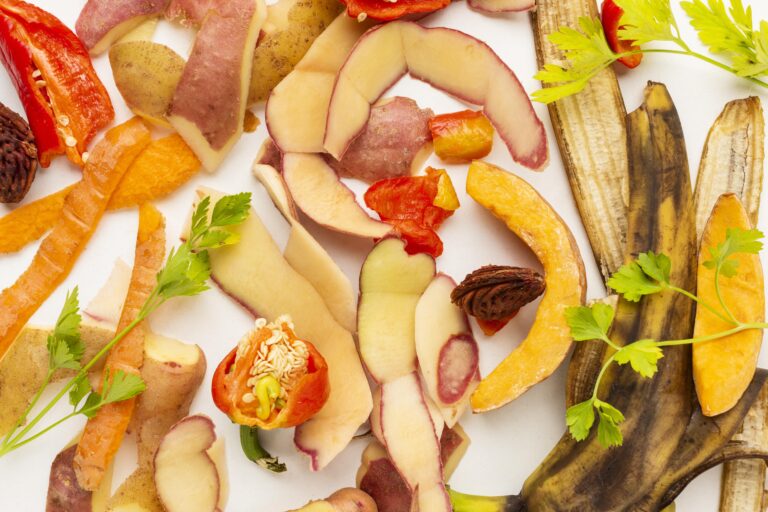Simple Ways to Reuse Kitchen Scraps in the Garden
Turning food waste into garden gold — naturally and effortlessly.

Reducing waste doesn’t have to be complicated, especially when your garden is happy to do most of the work for you. I’ve found that many of the scraps we usually toss in the bin are actually small treasures in disguise — full of nutrients our plants can thrive on. Here are some simple, natural ways I’ve been reusing kitchen scraps in my small garden to feed the soil, reduce waste, and gently close the loop.
- Composting: Let Nature Do Its Thing
The classic, of course. Whether you have a proper compost bin or a DIY setup, turning kitchen scraps into rich compost is one of the most satisfying ways to nourish your soil. I toss in veggie peels, coffee grounds, eggshells, wilted herbs, and shredded paper. Avoid meat and dairy, as they can attract pests. Stir occasionally, keep it moist but not soggy, and with time you’ll be rewarded with dark, earthy compost.
- Trench Composting: No Bin, No Problem
If you don’t have space or energy for a full compost system, trench composting is an easy alternative. Simply dig a small hole or trench in your garden bed, drop in your kitchen scraps, cover with soil, and let the worms and microbes do the rest. I often do this between my veggie rows — it quietly improves the soil in the background.
- Banana Skins Under Tomatoes
One of the simplest tricks I’ve tried! Banana peels are full of potassium and phosphorus — nutrients tomatoes love. I chop them up and bury them just under the root zone when planting my tomatoes. They slowly break down and feed the plant as it grows. I’ve noticed my tomatoes seem healthier and happier when I do this.
- Coffee Grounds for Acidity-Loving Plants
Used coffee grounds are great for adding nitrogen to the soil and are especially loved by acid-loving plants like blueberries, camellias, and azaleas. I sprinkle them around the base of these plants or mix lightly into the soil. Just don’t overdo it — moderation is key.
- Crushed Eggshells for Calcium and Slugs
Eggshells take a little longer to break down, but they’re full of calcium. I crush them finely and mix them into the soil around tomatoes, capsicums, and chillies. Bonus: when left a bit sharp, they can deter slugs and snails naturally.
- Regrow Veggies from Scraps
This one’s especially fun if you like a little kitchen experiment. Spring onions, celery, lettuce, and even basil can be regrown from scraps in a jar of water. Once they sprout new roots or leaves, I transfer them to a pot or garden bed. It’s like getting free plants from your kitchen.
- Citrus Peel Seed Starters
Dried citrus halves make cute, biodegradable seed starters. Fill them with soil, plant a seed, and when it’s ready to go outside, you can plant the whole thing in the soil — peel and all. It breaks down and feeds the earth while protecting the seedling.
A Gentle Reminder
When reusing kitchen scraps in the garden, always keep pests in mind. Avoid oily, salty, or processed leftovers, and keep things buried or balanced with browns (like dried leaves or shredded cardboard) if you’re composting. Your soil — and the little creatures within — will thank you.
Gardening doesn’t have to be expensive or wasteful. Sometimes the simplest solutions are already in your hands — or on your chopping board. With a little intention, what we once saw as waste becomes part of the growing cycle.
